Abstract
OBJECTIVE: To provide an empirical examination of the effect that chronic illicit drug use has on emergency room (ER) utilization, controlling for the potential biases introduced by correlation between unobservable determinants of chronic illicit drug use and ER utilization. DATA SOURCES/STUDY SETTING: From the National Household Survey on Drug Abuse 1994 (NHSDA94). STUDY DESIGN: Chronic illicit drug use and ER utilization are analyzed for 5,384 females and 4,177 males in 1994. The study uses a two-stage estimation technique. In the first stage, sociodemographic, drug use history, and drug use risk variables are used to estimate the probability that the subject is a chronic illicit drug user (CDU). In the second stage, the first-stage estimates provide information needed to test for the possibility of bias in the estimation of ER utilization. This bias is the result of the correlation between unobservable influences on the probability that the person is a CDU and the probability that he or she uses an ER. DATA COLLECTION/EXTRACTION METHODS: The data were collected through a multistage stratified sampling design. With the use of this methodology, the resulting data set provides the most comprehensive information on household drug use. PRINCIPAL FINDINGS: Without a correction for the possibility of endogeneity bias, chronic illicit drug use is a positive (for both males and females) and a significant (for females only) determinant of the probability of using an ER for medical treatment. After a correction for endogeneity, the influence of chronic drug use remains positive and significant for females and becomes significant for males. The corresponding change in probability for females is from 6 percent to 30 percent, while for males the increase is from an insignificant 0.1 percent to a significant 36 percent change. CONCLUSIONS: We estimate that chronic drug-using females and males, after adjustments for bias, increase the probability that they use an ER by more than 30 percent compared to their casual or non-drug-using counterparts. Therefore, policymakers and health services providers may consider designing programs to bring primary care and prevention services to facilities where drug users are more likely to seek access to care, within an ER setting.
Full text
PDF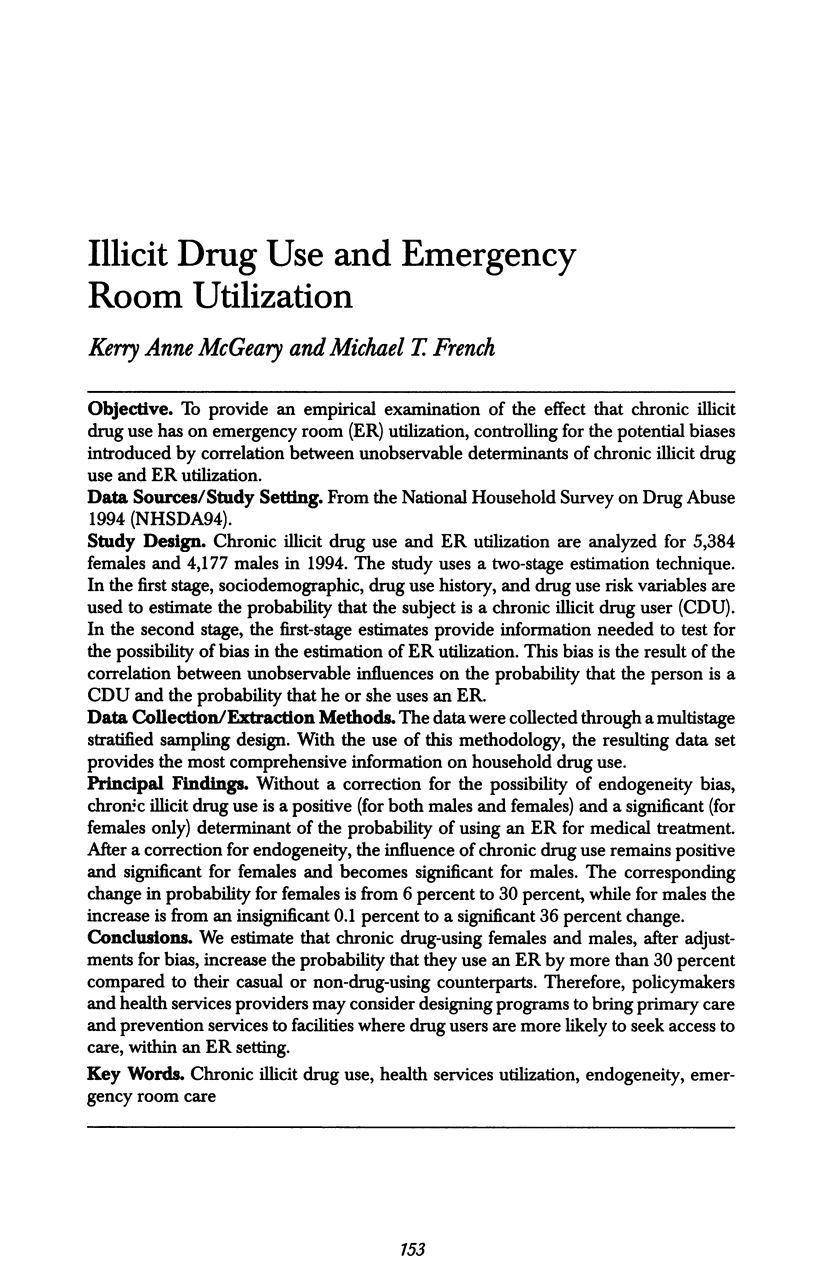
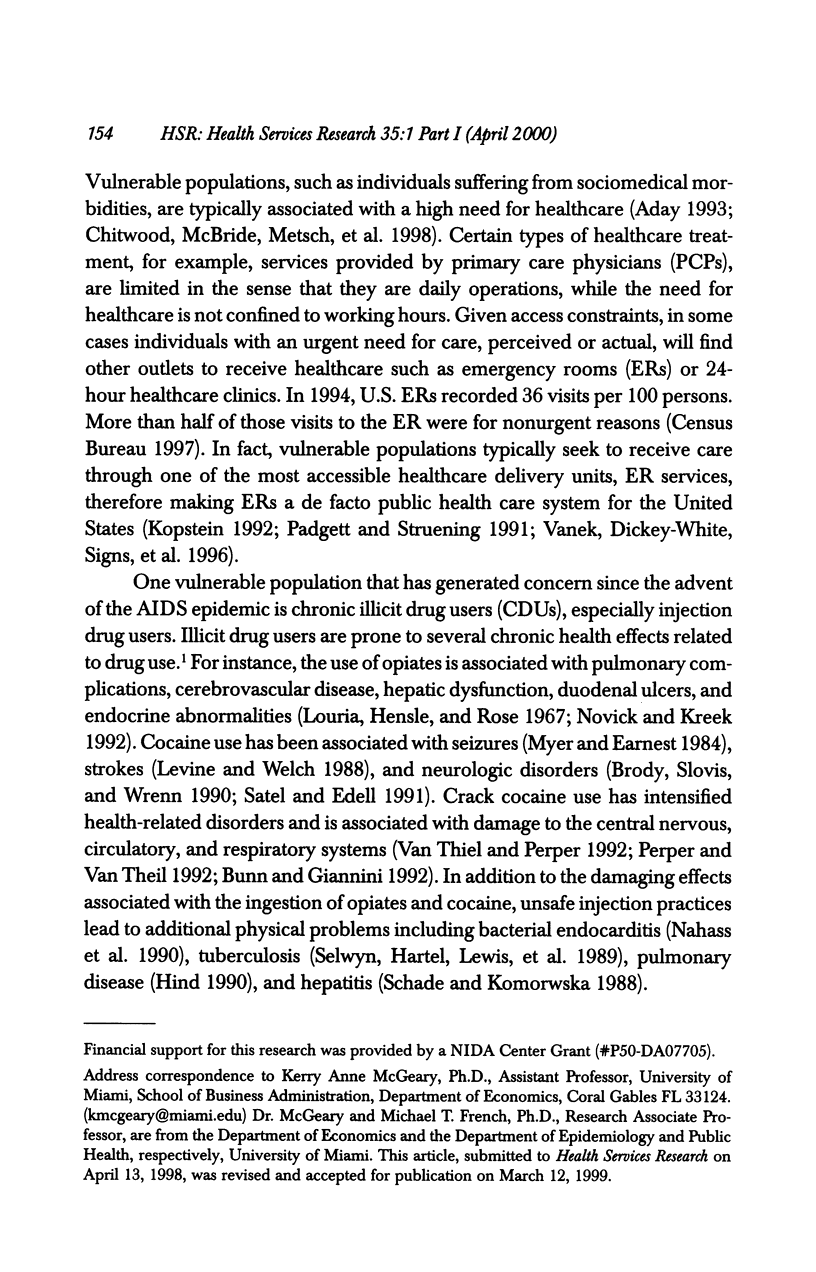
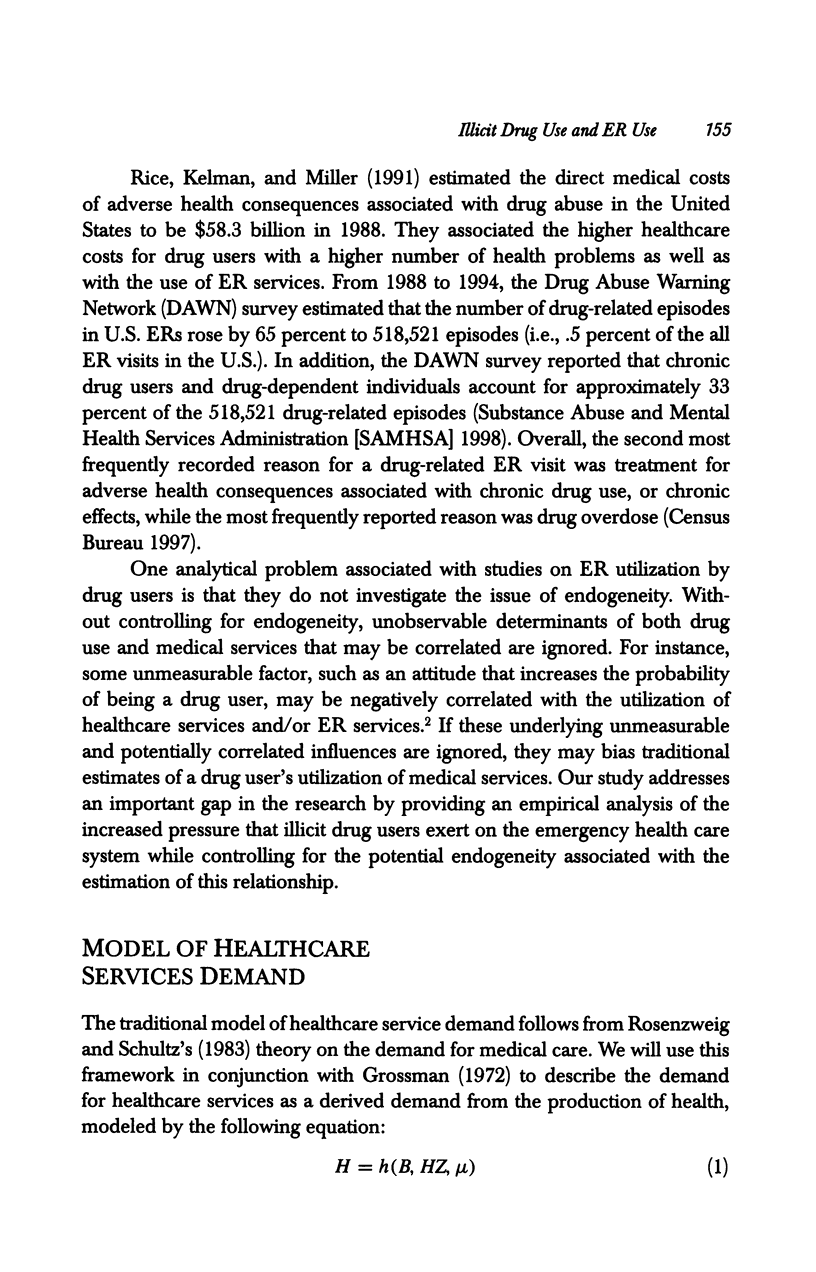
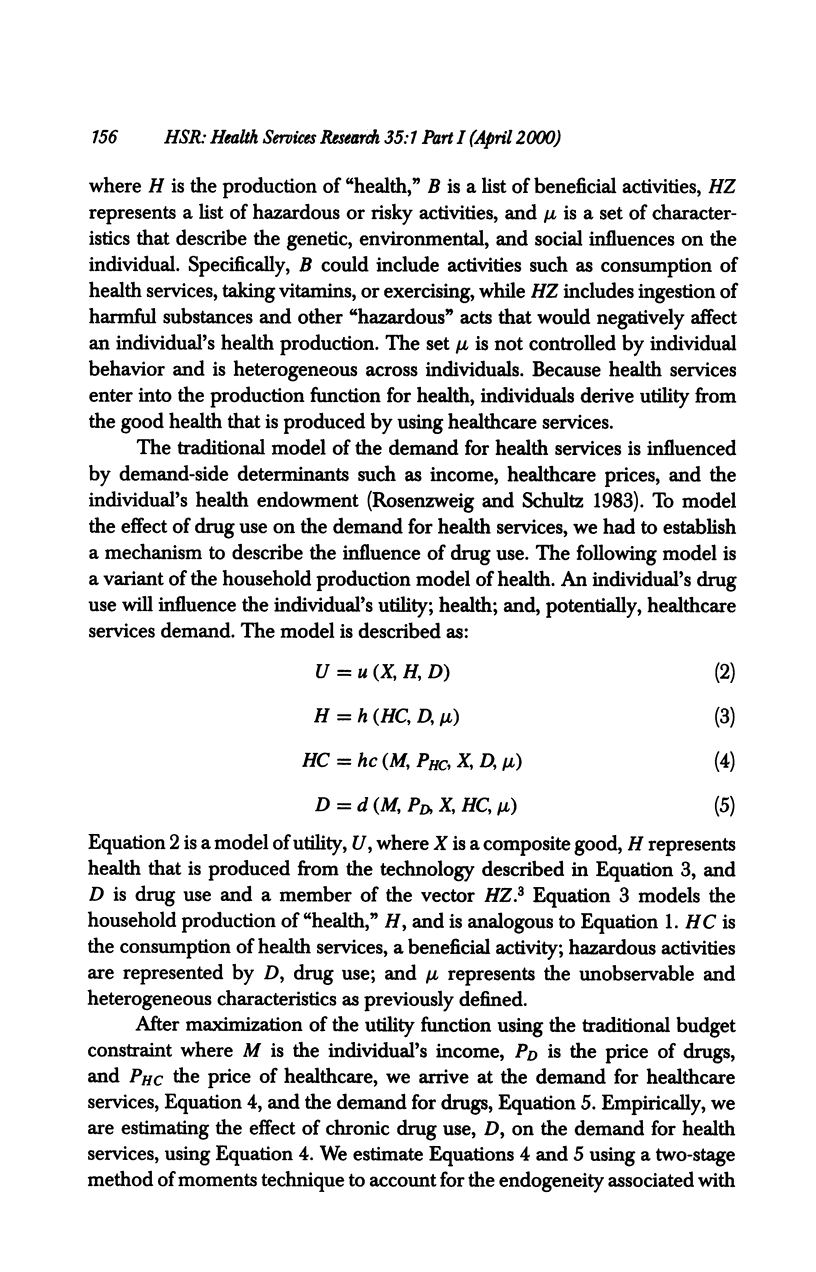
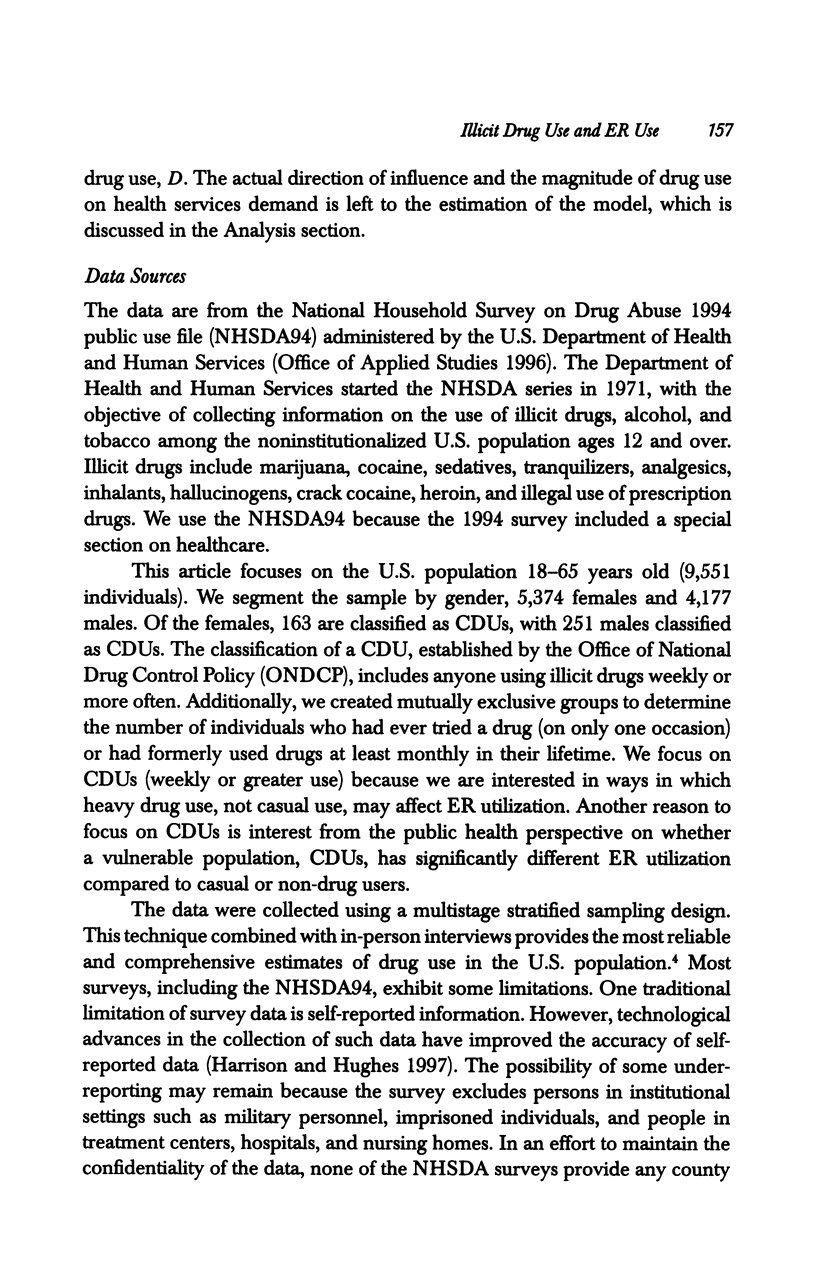
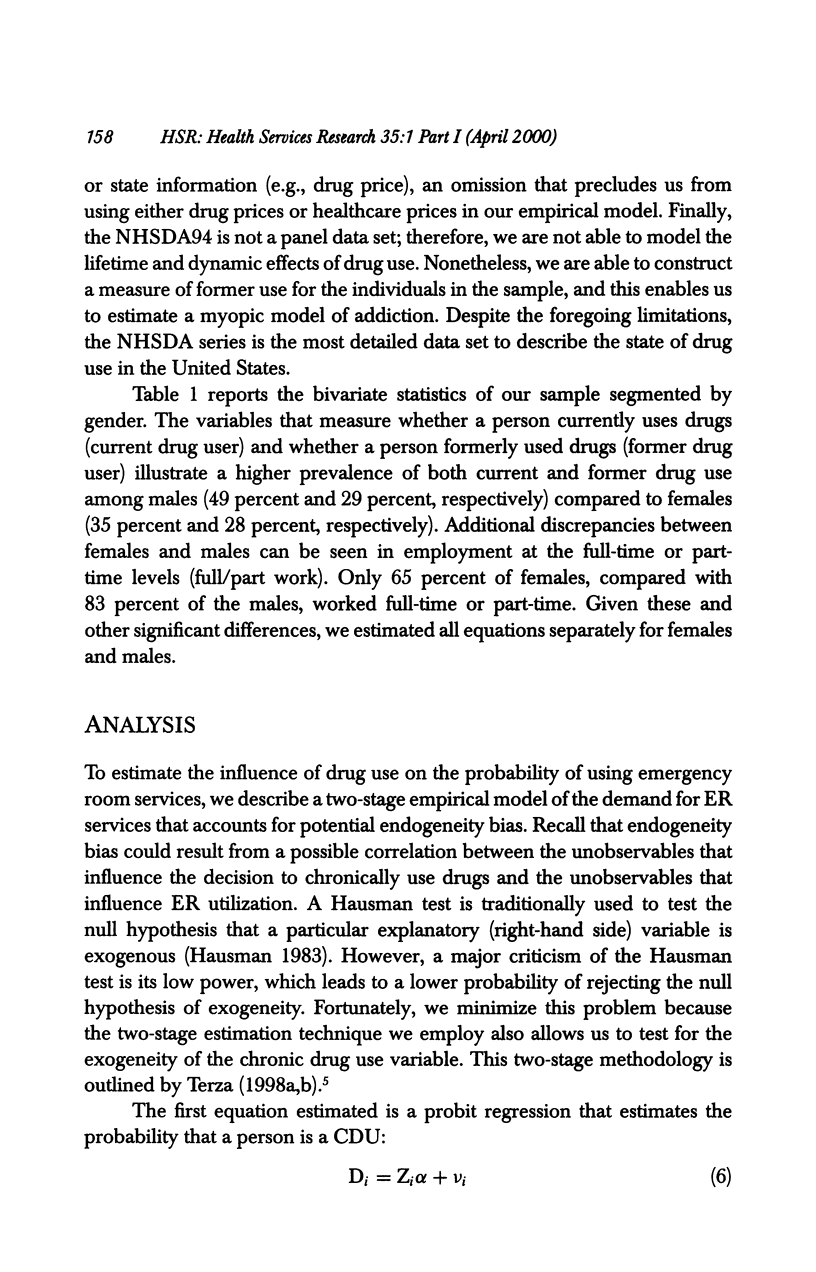
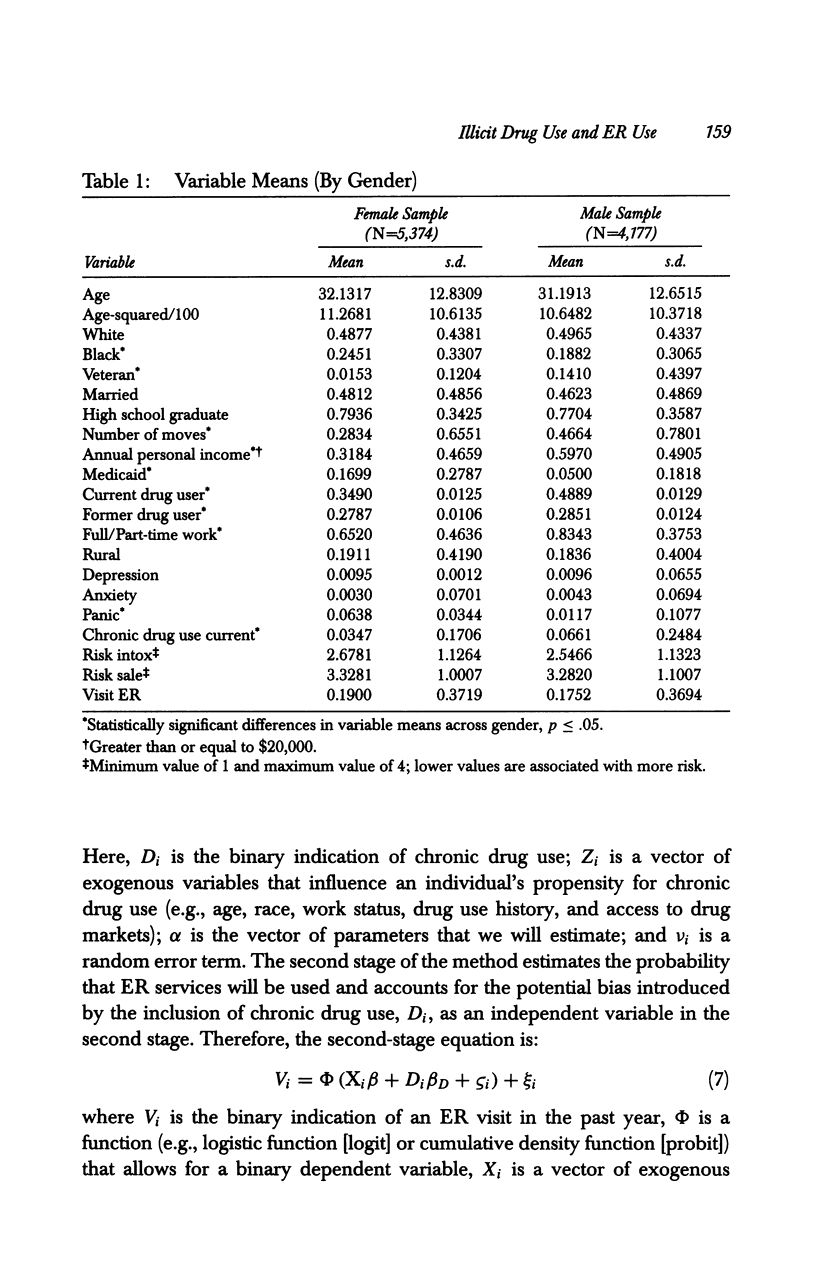
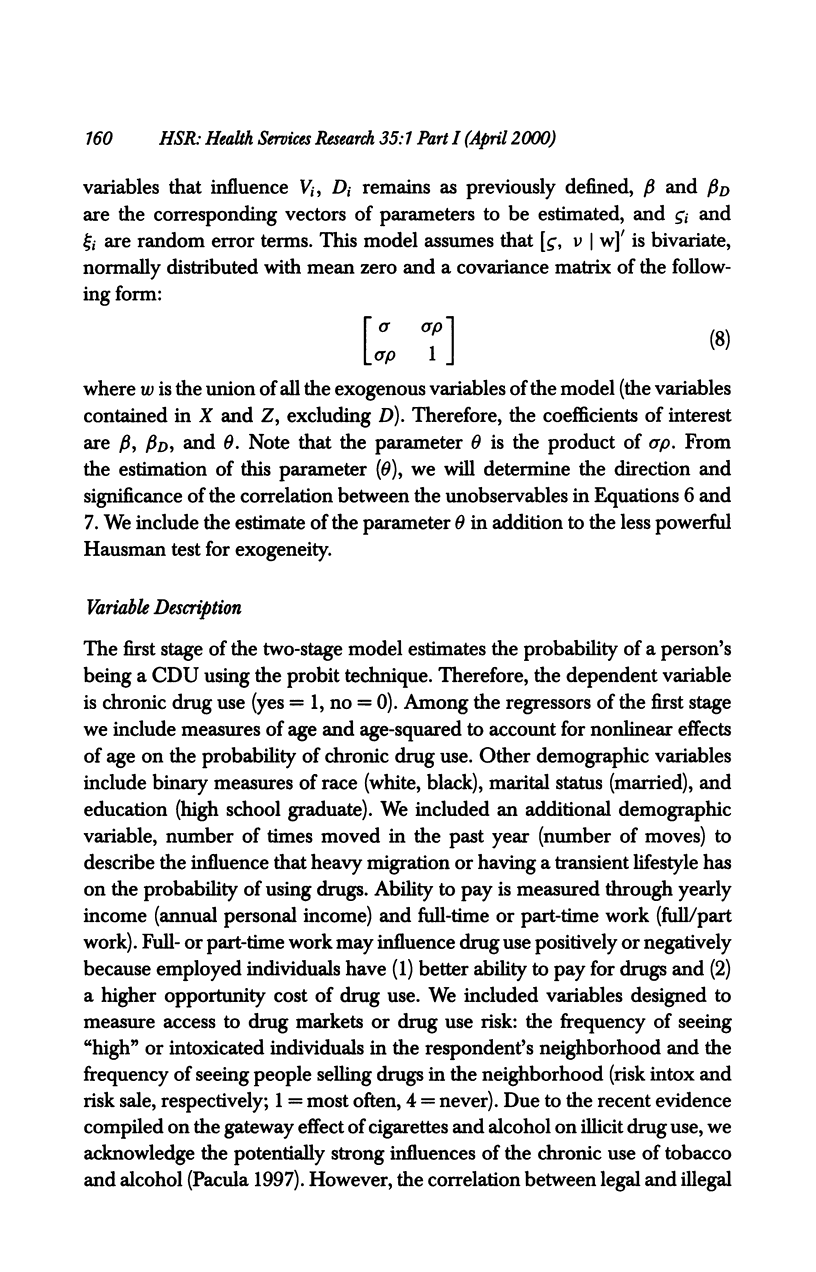
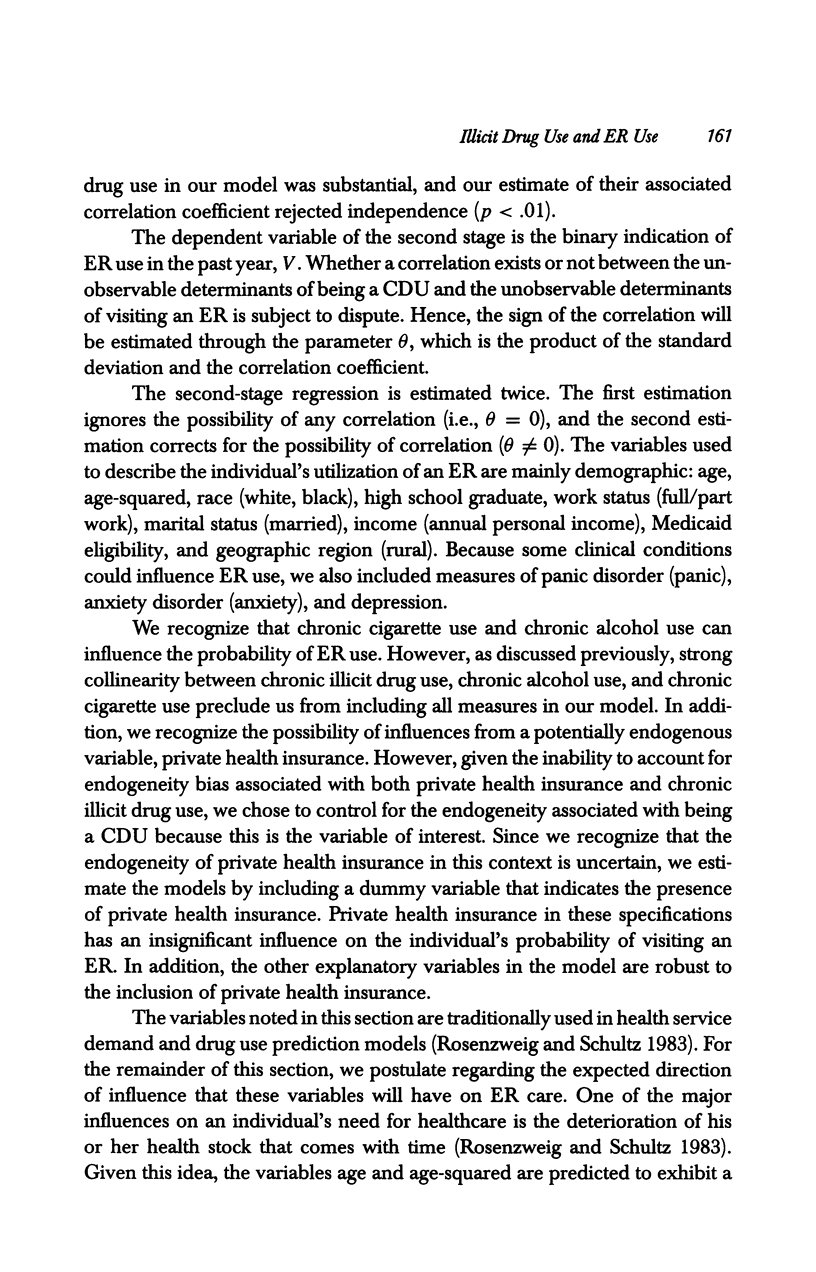
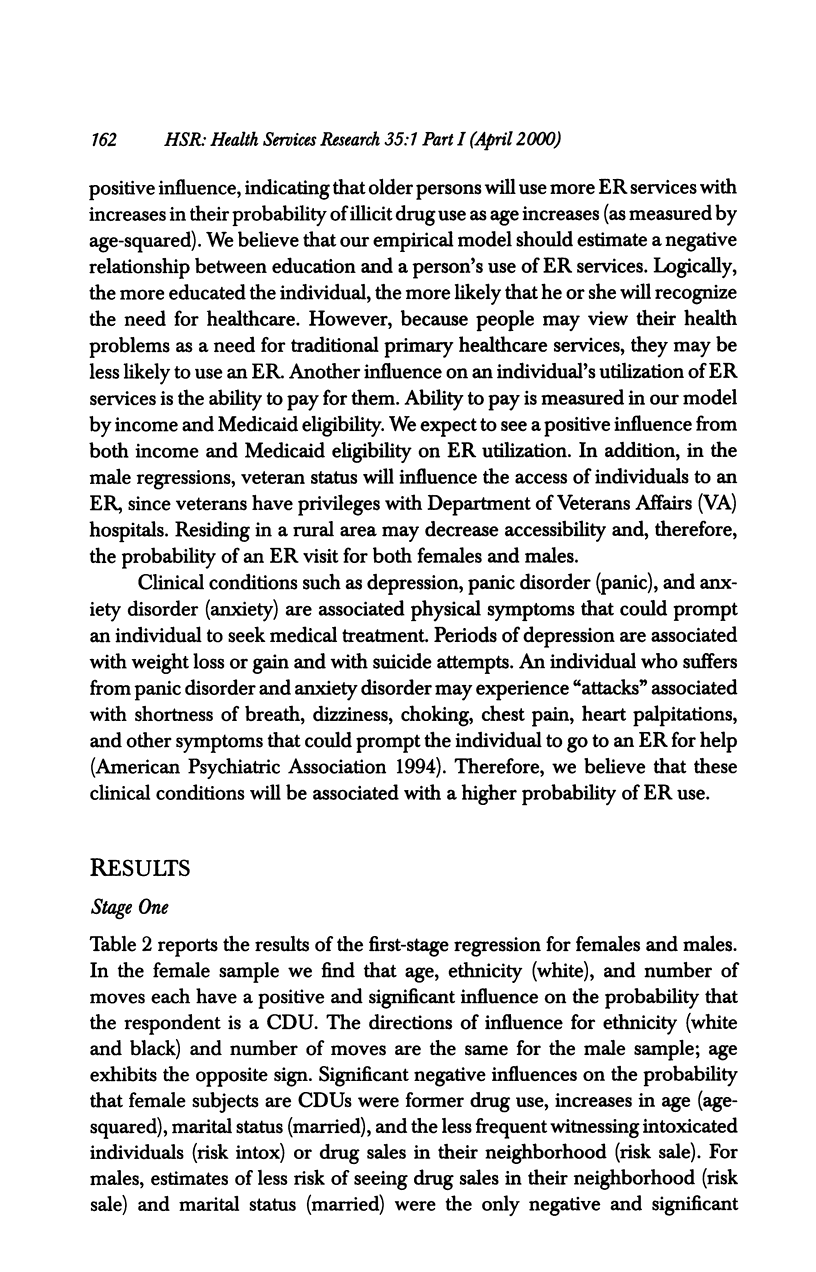
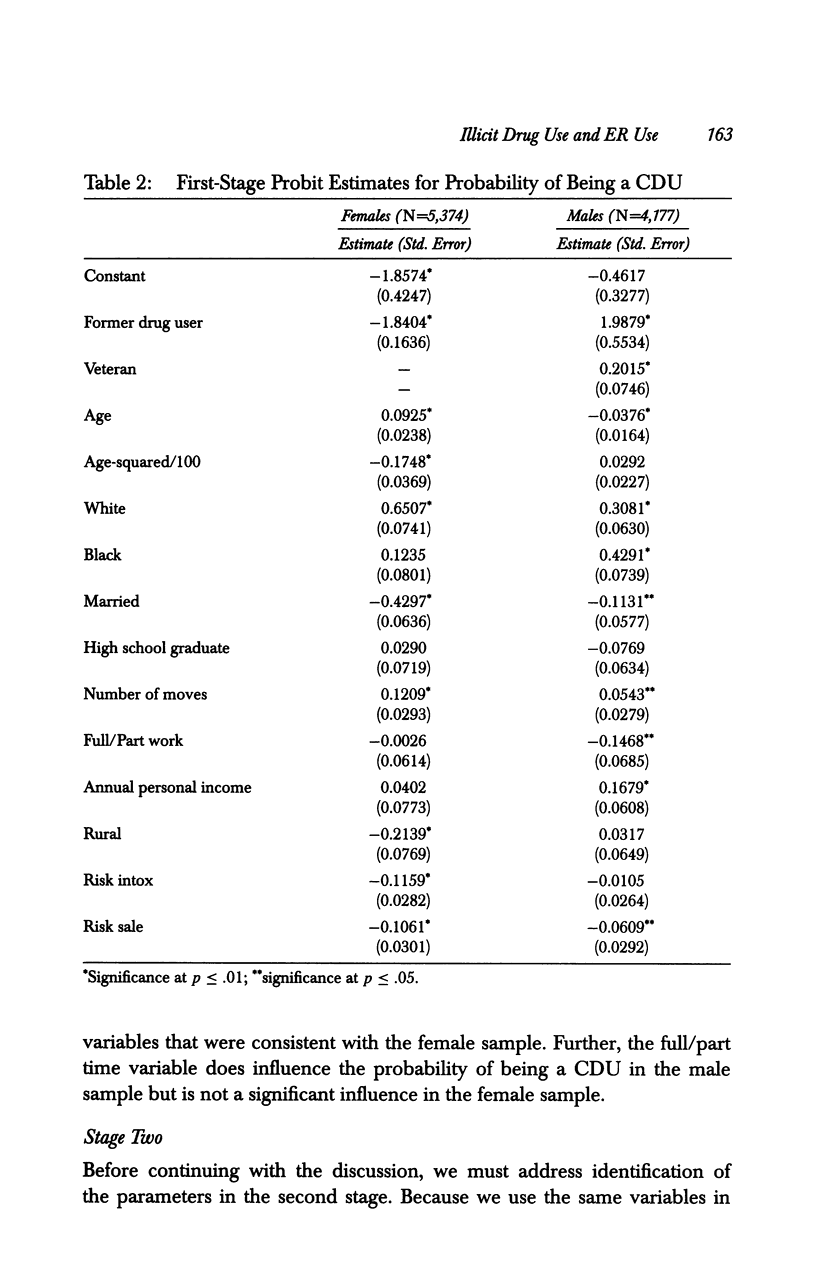
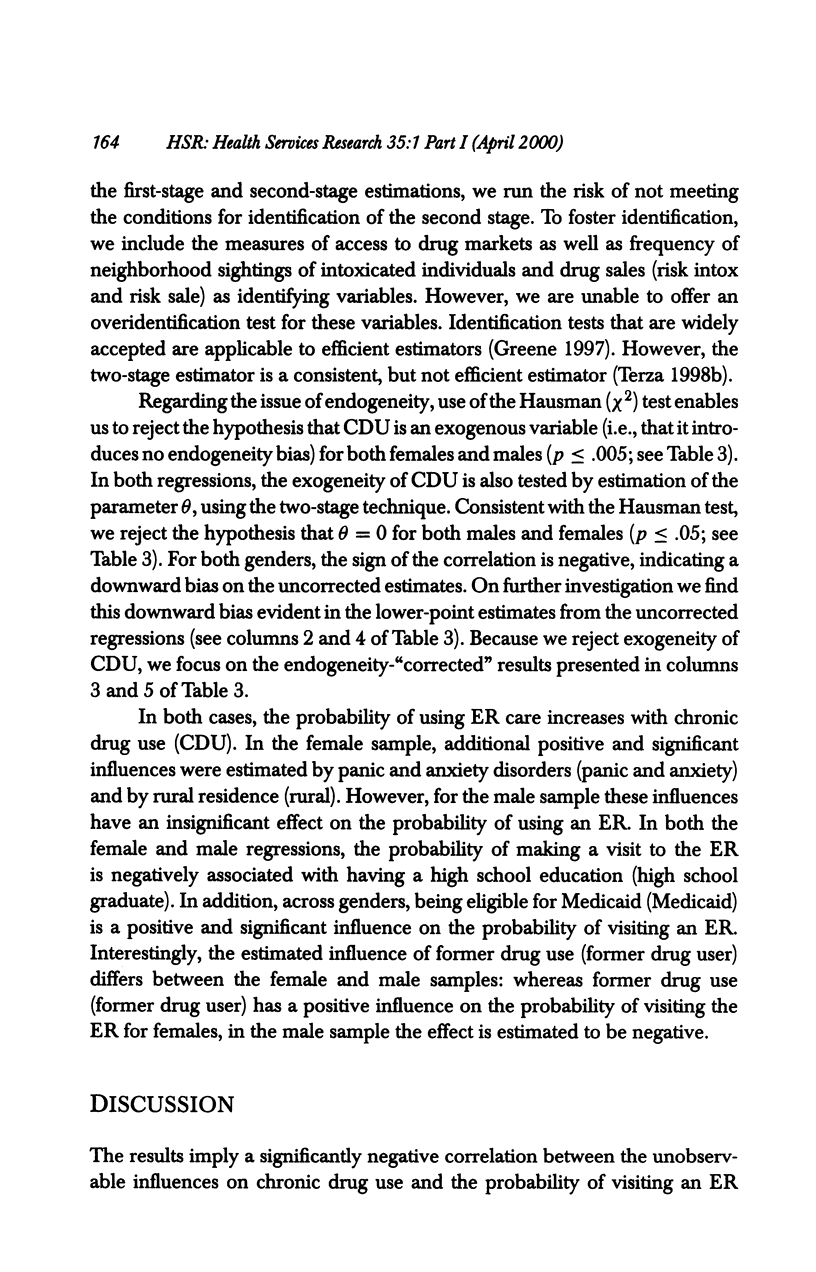
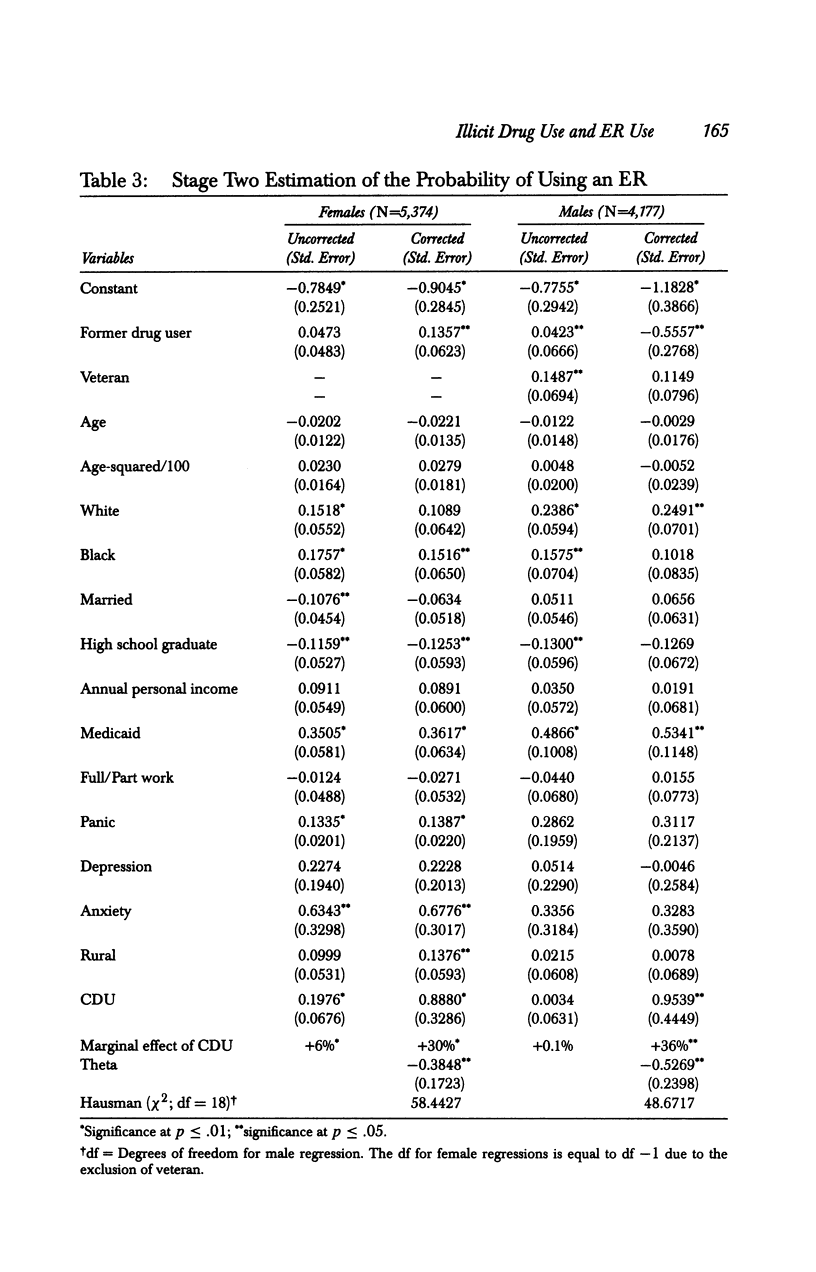
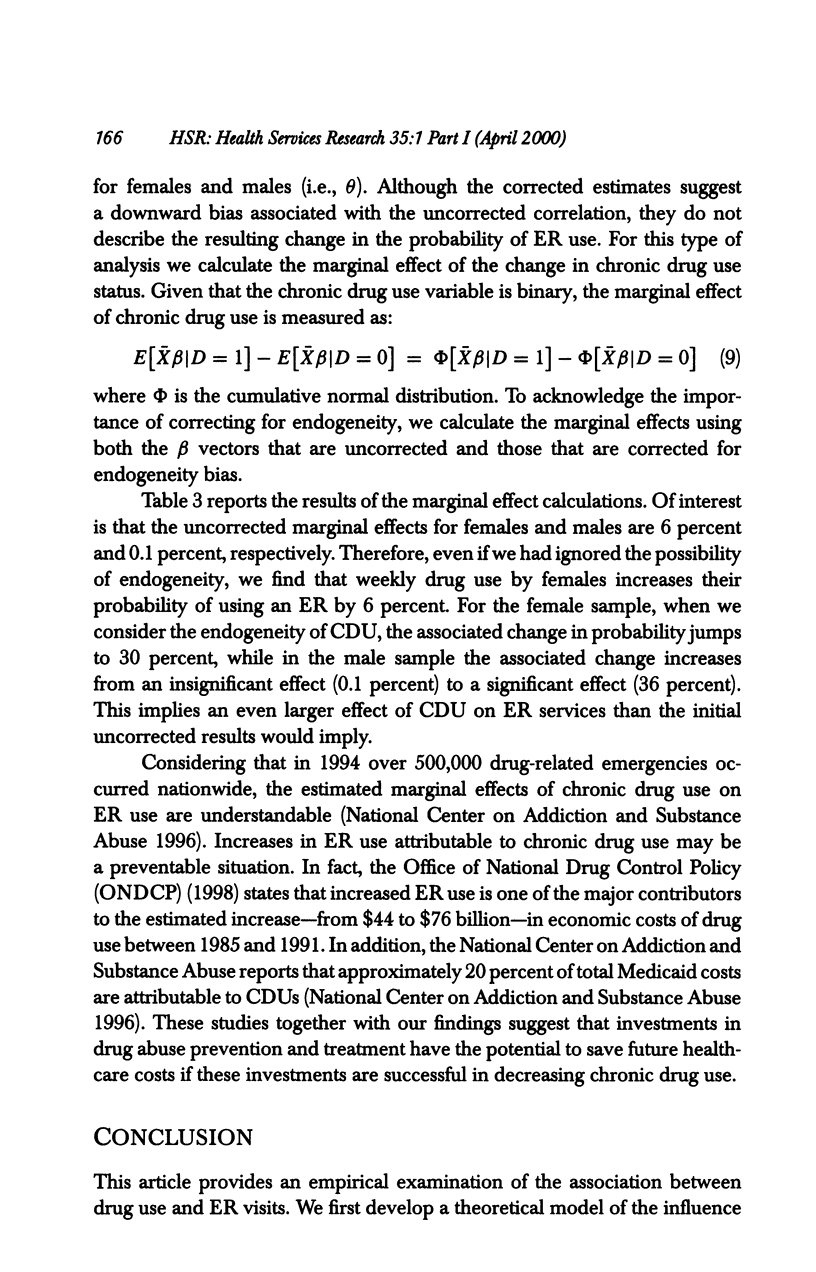
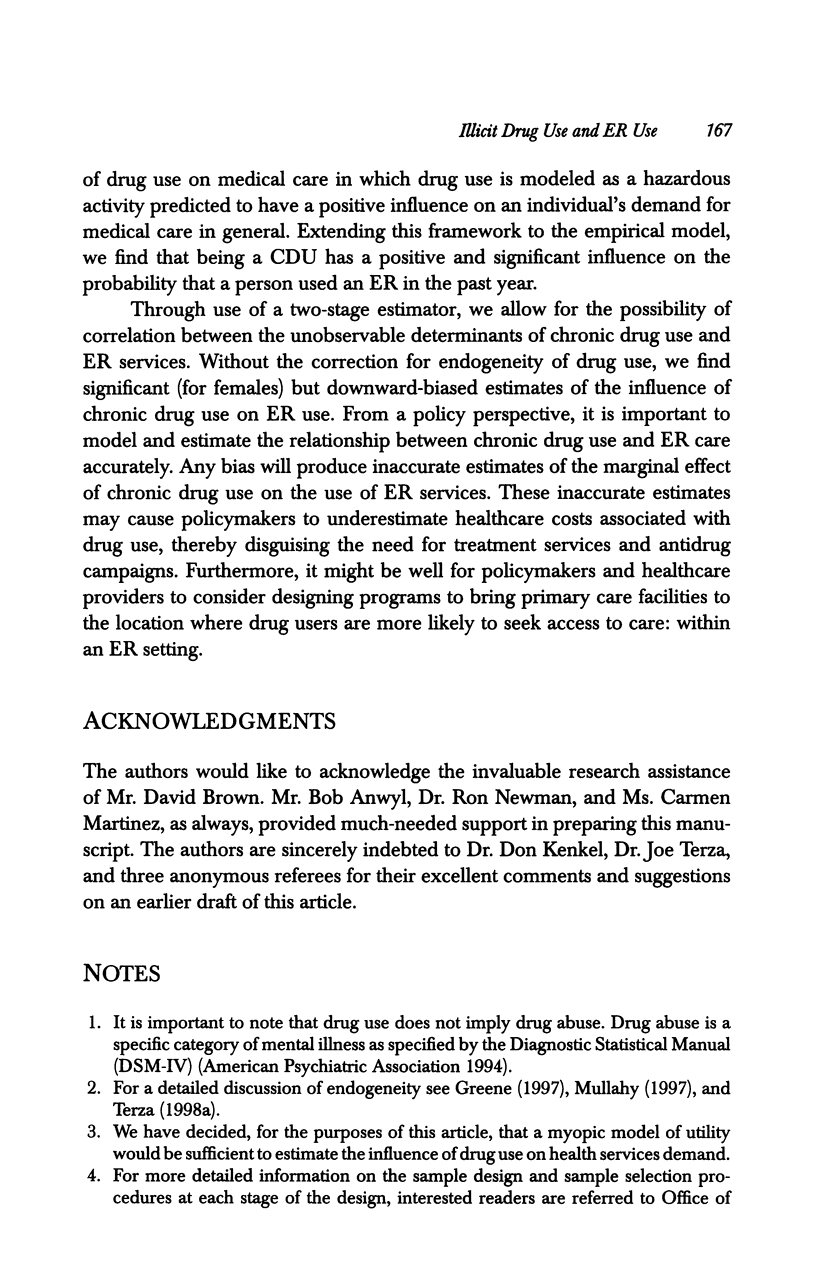
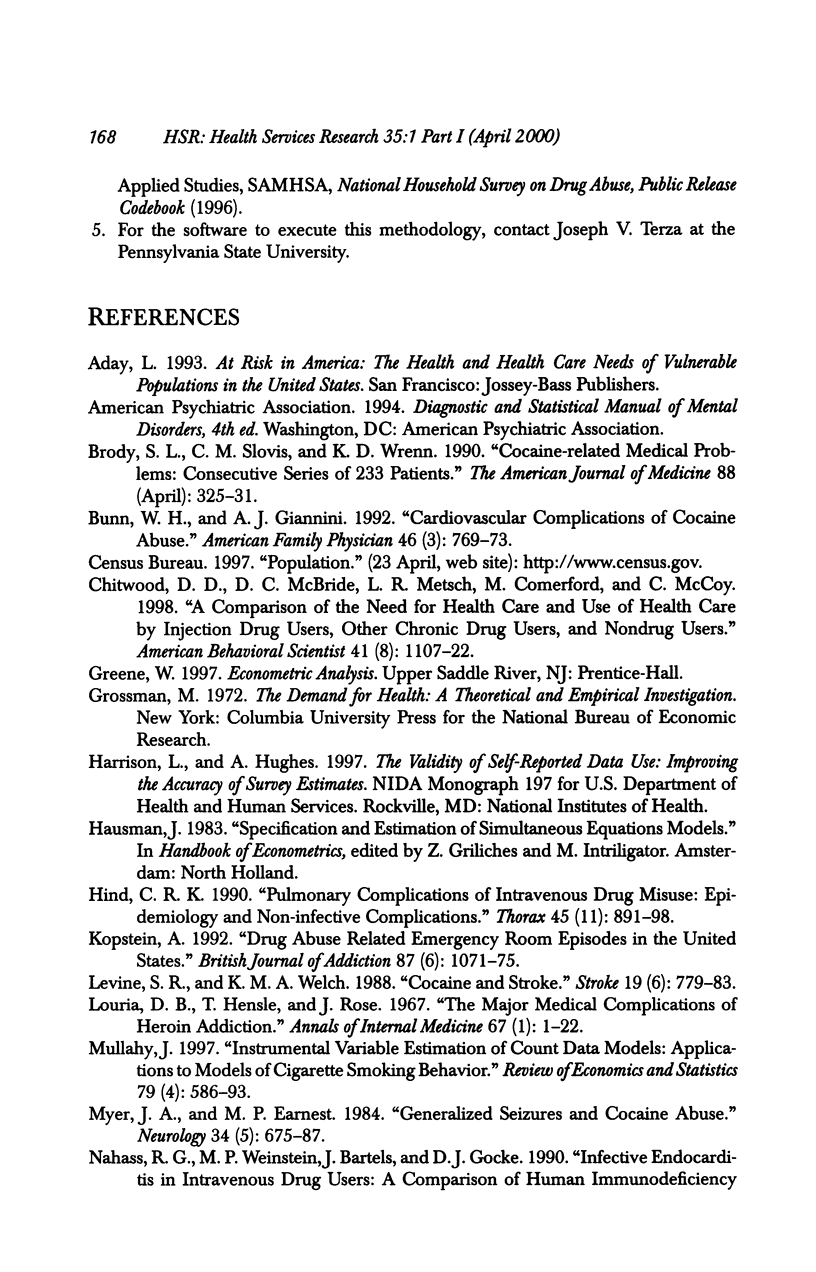
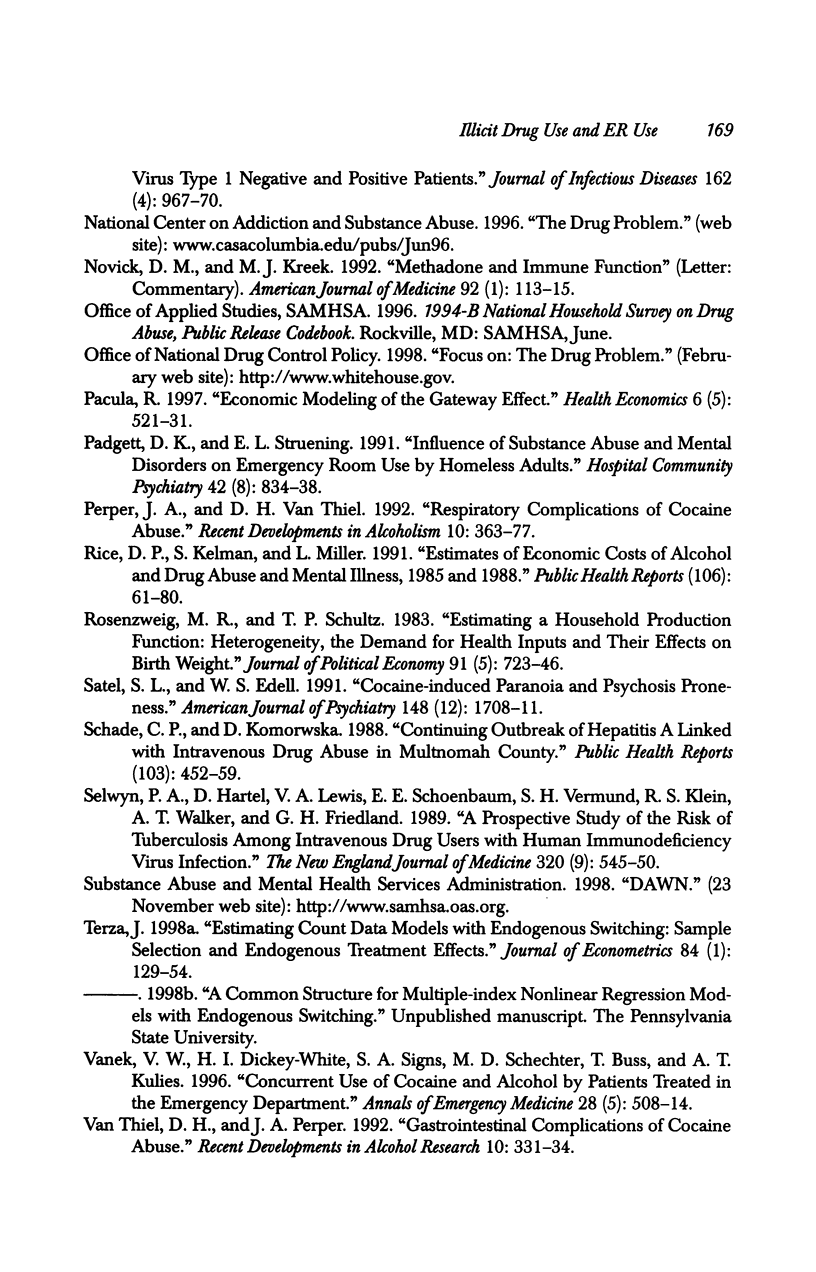
Selected References
These references are in PubMed. This may not be the complete list of references from this article.
- Brody S. L., Slovis C. M., Wrenn K. D. Cocaine-related medical problems: consecutive series of 233 patients. Am J Med. 1990 Apr;88(4):325–331. doi: 10.1016/0002-9343(90)90484-u. [DOI] [PubMed] [Google Scholar]
- Bunn W. H., Giannini A. J. Cardiovascular complications of cocaine abuse. Am Fam Physician. 1992 Sep;46(3):769–773. [PubMed] [Google Scholar]
- Hind C. R. Pulmonary complications of intravenous drug misuse. 1. Epidemiology and non-infective complications. Thorax. 1990 Nov;45(11):891–898. doi: 10.1136/thx.45.11.891. [DOI] [PMC free article] [PubMed] [Google Scholar]
- Kopstein A. Drug abuse related emergency room episodes in the United States. Br J Addict. 1992 Jul;87(7):1071–1075. doi: 10.1111/j.1360-0443.1992.tb03125.x. [DOI] [PubMed] [Google Scholar]
- Levine S. R., Welch K. M. Cocaine and stroke. Stroke. 1988 Jun;19(6):779–783. doi: 10.1161/01.str.19.6.779. [DOI] [PubMed] [Google Scholar]
- Louria D. B., Hensle T., Rose J. The major medical complications of heroin addiction. Ann Intern Med. 1967 Jul;67(1):1–22. doi: 10.7326/0003-4819-67-1-1. [DOI] [PubMed] [Google Scholar]
- Myers J. A., Earnest M. P. Generalized seizures and cocaine abuse. Neurology. 1984 May;34(5):675–676. doi: 10.1212/wnl.34.5.675. [DOI] [PubMed] [Google Scholar]
- Nahass R. G., Weinstein M. P., Bartels J., Gocke D. J. Infective endocarditis in intravenous drug users: a comparison of human immunodeficiency virus type 1-negative and -positive patients. J Infect Dis. 1990 Oct;162(4):967–970. doi: 10.1093/infdis/162.4.967. [DOI] [PubMed] [Google Scholar]
- Novick D. M., Kreek M. J. Methadone and immune function. Am J Med. 1992 Jan;92(1):113–115. doi: 10.1016/0002-9343(92)90031-6. [DOI] [PubMed] [Google Scholar]
- Pacula R. L. Economic modelling of the gateway effect. Health Econ. 1997 Sep-Oct;6(5):521–524. doi: 10.1002/(sici)1099-1050(199709)6:5<521::aid-hec301>3.0.co;2-6. [DOI] [PubMed] [Google Scholar]
- Padgett D. K., Struening E. L. Influence of substance abuse and mental disorders on emergency room use by homeless adults. Hosp Community Psychiatry. 1991 Aug;42(8):834–838. doi: 10.1176/ps.42.8.834. [DOI] [PubMed] [Google Scholar]
- Perper J. A., Van Thiel D. H. Respiratory complications of cocaine abuse. Recent Dev Alcohol. 1992;10:363–377. doi: 10.1007/978-1-4899-1648-8_18. [DOI] [PubMed] [Google Scholar]
- Satel S. L., Edell W. S. Cocaine-induced paranoia and psychosis proneness. Am J Psychiatry. 1991 Dec;148(12):1708–1711. doi: 10.1176/ajp.148.12.1708. [DOI] [PubMed] [Google Scholar]
- Schade C. P., Komorwska D. Continuing outbreak of hepatitis A linked with intravenous drug abuse in Multnomah County. Public Health Rep. 1988 Sep-Oct;103(5):452–459. [PMC free article] [PubMed] [Google Scholar]
- Selwyn P. A., Hartel D., Lewis V. A., Schoenbaum E. E., Vermund S. H., Klein R. S., Walker A. T., Friedland G. H. A prospective study of the risk of tuberculosis among intravenous drug users with human immunodeficiency virus infection. N Engl J Med. 1989 Mar 2;320(9):545–550. doi: 10.1056/NEJM198903023200901. [DOI] [PubMed] [Google Scholar]
- Van Thiel D. H., Perper J. A. Gastrointestinal complications of cocaine abuse. Recent Dev Alcohol. 1992;10:331–334. doi: 10.1007/978-1-4899-1648-8_15. [DOI] [PubMed] [Google Scholar]
- Vanek V. W., Dickey-White H. I., Signs S. A., Schechter M. D., Buss T., Kulics A. T. Concurrent use of cocaine and alcohol by patients treated in the emergency department. Ann Emerg Med. 1996 Nov;28(5):508–514. doi: 10.1016/s0196-0644(96)70114-2. [DOI] [PubMed] [Google Scholar]


